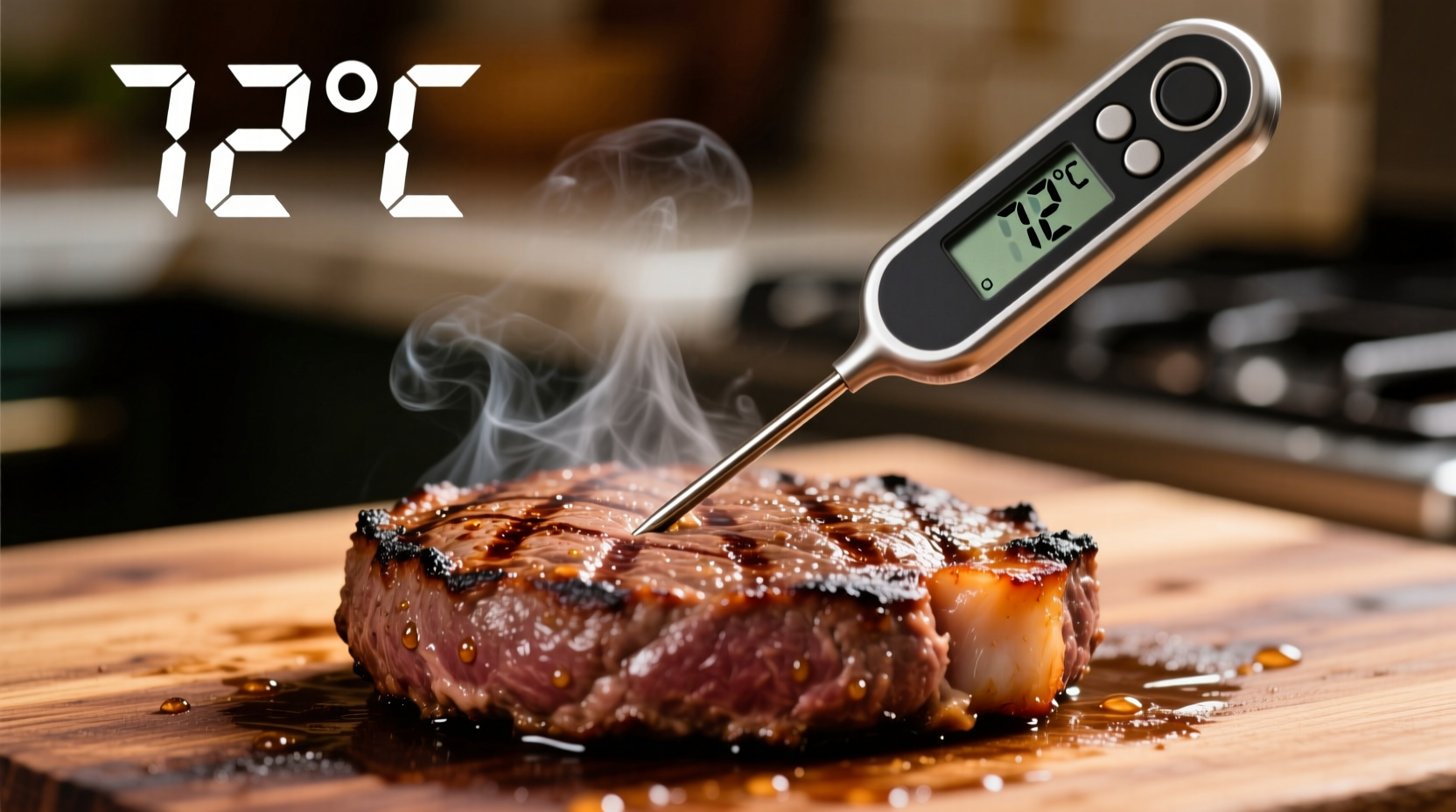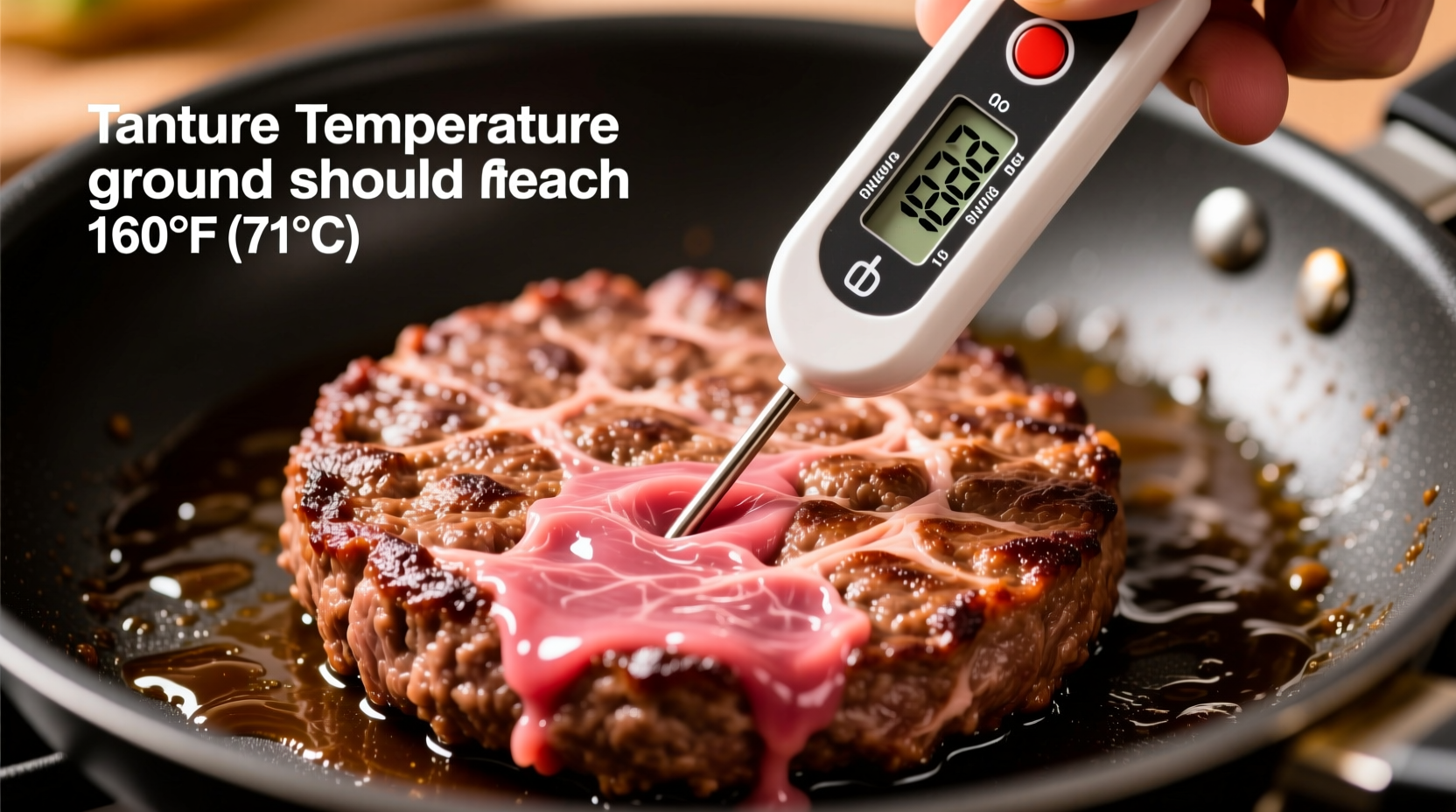The safe minimum internal temperature for ground beef is 160°F (71.1°C). This temperature destroys harmful bacteria like E. coli that may be present in ground meat, making it safe to eat according to USDA Food Safety and Inspection Service guidelines.
When you're cooking burgers, meatloaf, or tacos, knowing the exact temperature for ground beef isn't just about doneness—it's a critical food safety requirement. Unlike whole cuts of meat where bacteria live only on the surface, grinding distributes potential pathogens throughout the meat. This fundamental difference explains why ground beef requires higher temperatures than steaks or roasts.
Why Ground Beef Needs Higher Temperatures Than Whole Cuts
Understanding the science behind cooking temperatures helps you appreciate why 160°F is non-negotiable for ground beef. When meat is ground, any bacteria present on the surface gets mixed throughout the entire batch. This distribution means you can't rely on searing the outside to kill pathogens—the entire mass must reach a temperature that eliminates bacteria like E. coli O157:H7 and Salmonella.
| Meat Type | Safe Minimum Internal Temperature | Rest Time |
|---|---|---|
| Ground Beef, Pork, Veal, Lamb | 160°F (71.1°C) | No rest required |
| Ground Turkey, Chicken | 165°F (73.9°C) | No rest required |
| Beef, Pork, Veal, Lamb Steaks & Roasts | 145°F (62.8°C) | 3 minutes |
| Poultry (whole or pieces) | 165°F (73.9°C) | No rest required |
The Evolution of Ground Beef Safety Standards
Food safety guidelines have evolved significantly over the past few decades as our understanding of foodborne pathogens has improved. In the 1980s, many recipes recommended cooking ground beef to only 140-150°F. However, after several high-profile E. coli outbreaks linked to undercooked hamburgers in the early 1990s, the USDA revised its recommendations to the current 160°F standard.
This change reflects both improved detection methods for pathogens and a better understanding of how temperature affects bacterial survival. Modern food safety science confirms that E. coli bacteria are effectively destroyed at 160°F, while lower temperatures may leave dangerous pathogens alive.
Using a Thermometer Correctly: Your Only Reliable Safety Tool
Despite common misconceptions, you cannot safely determine if ground beef is cooked by color alone. The USDA confirms that 1 in 4 hamburgers turns brown before reaching a safe temperature. Here's how to use a thermometer properly:
- Insert the probe into the thickest part of the meat, avoiding bone, fat, or gristle
- For patties, insert sideways from the edge to reach the center
- Wait 10-15 seconds for an accurate reading
- Sanitize the thermometer between uses
- Check multiple spots in larger batches of ground meat
Digital instant-read thermometers provide the most accurate results for home cooks. Calibrate your thermometer regularly by testing it in ice water (should read 32°F/0°C) or boiling water (212°F/100°C at sea level).

Common Ground Beef Temperature Mistakes
Even experienced cooks make these critical errors that compromise food safety:
- Trusting color over temperature: Browned meat doesn't equal safe meat—many factors affect color changes
- Testing only once: Temperature can vary within a single patty or batch
- Using an uncalibrated thermometer: Inaccurate readings lead to dangerous assumptions
- Removing meat too early: Remember that temperature continues rising 5-10°F after removal from heat
- Washing after handling: Proper handwashing is essential after touching raw ground beef
Special Considerations for Different Cooking Methods
Whether you're using a grill, stovetop, oven, or slow cooker, the 160°F rule remains constant, but application varies:
- Grilling: Create an indirect heat zone to move patties if they're browning too fast before reaching temperature
- Cast iron: Preheat properly to avoid sticking, which can cause tearing when checking temperature
- Slow cooking: Ground beef must still reach 160°F even in moist cooking environments
- High altitude: Increase cooking time by 25% as water boils at lower temperatures
What Happens If Ground Beef Isn't Cooked to 160°F?
Consuming ground beef cooked below 160°F risks foodborne illness from bacteria including:
- E. coli O157:H7: Causes severe abdominal cramps, diarrhea (often bloody), and vomiting
- Salmonella: Leads to fever, diarrhea, and stomach cramps appearing 6 hours to 6 days after exposure
- Listeria: Particularly dangerous for pregnant women, older adults, and immunocompromised individuals
The Centers for Disease Control and Prevention estimates that E. coli causes approximately 265,000 illnesses and 20 deaths annually in the United States. Children under 5 and older adults face the highest risk of complications from undercooked ground beef.
Practical Safety Tips for Handling Ground Beef
Food safety begins long before cooking. Follow these guidelines from the USDA Food Safety and Inspection Service:
- Keep ground beef refrigerated below 40°F until ready to cook
- Use within 1-2 days of purchase or freeze for longer storage
- Never thaw at room temperature—use refrigerator, cold water, or microwave methods
- Wash hands, utensils, and surfaces that contact raw meat with hot, soapy water
- Use separate cutting boards for raw meat and other ingredients
- Refrigerate leftovers within 2 hours (1 hour if above 90°F)
Remember that proper temperature control throughout the food handling process significantly reduces risks. The 160°F rule is just one critical component of comprehensive ground beef safety.











 浙公网安备
33010002000092号
浙公网安备
33010002000092号 浙B2-20120091-4
浙B2-20120091-4